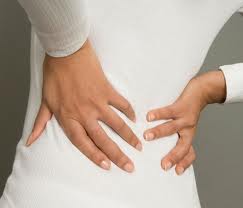Osteoarthritis is a degenerative joint disease that affects the joints, cartilage and bones. It may be a hereditary condition or can be brought about through metabolic, mechanical or developmental issues. In some cases it can cause such severe pain and decreased mobility that the only way to relieve the symptoms is to replace the joint.
Symptoms
Symptoms include pain, stiffness and tenderness in the joints. It can cause decreased mobility in the affected area and can have a serious impact on the sufferer’s quality of life. For instance you may be a regular tennis player but one day you may find that your knees begin to ache after an hour playing and may stay sore for some time after, and gradually over time you find they get more painful than earlier, until you can’t move nearly as smoothly as you might have done before. A sure sign of osteoarthritis is when you have symptoms even without doing any exercise. These symptoms might include; cracking joints, swelling around the joint, pain and stiffness after periods of inactivity.
Who Gets It?
While anyone at any age can get osteoarthritis, it is most common in people over the age of 40 who have been active and are still active throughout their life. Age is the biggest contributory factor for osteoarthritis and it becomes increasingly common the  older you get, but there are other factors that can cause it to occur. These include:
older you get, but there are other factors that can cause it to occur. These include:
- Being overweight
- Joints being injured through an accident
- Diabetes
- Joint Infection
- Several other joint syndromes and diseases
It has to be made clear though that age is not a direct cause of osteoarthritis, it is at most a primary factor. It is the natural degradation of the cartilage in joints that causes the problem as they lose their water content and fail to maintain a natural cushioning effect which normally keeps joints healthy.
What Can You Do About It?
There are several ways to treat osteoarthritis:
Exercise –
It is really important to in all but extreme cases of osteoarthritis, to exercise the joints as much as possible to keep them supple and working. This reduces pain in the long run.
Change of Lifestyle –
If you are overweight or obese it is extremely important for you to get to a healthy body weight as the added weight puts stress on your joints and accentuates your symptoms.
Physiotherapy –
There are many physical treatments for osteoarthritis, which works to reduce pain.
Surgery –
Replacing or resurfacing joints is an extreme but effective way removing symptoms.
Drugs and Injections –
Anti-inflammatory drugs and injections of hyaluronic acid are also proven to be effective at reducing the symptoms.
Joseph Flange suffered from osteoarthritis for several years. He has tried many osteoarthritis treatments and found a combination of injections and physio worked best for him.

